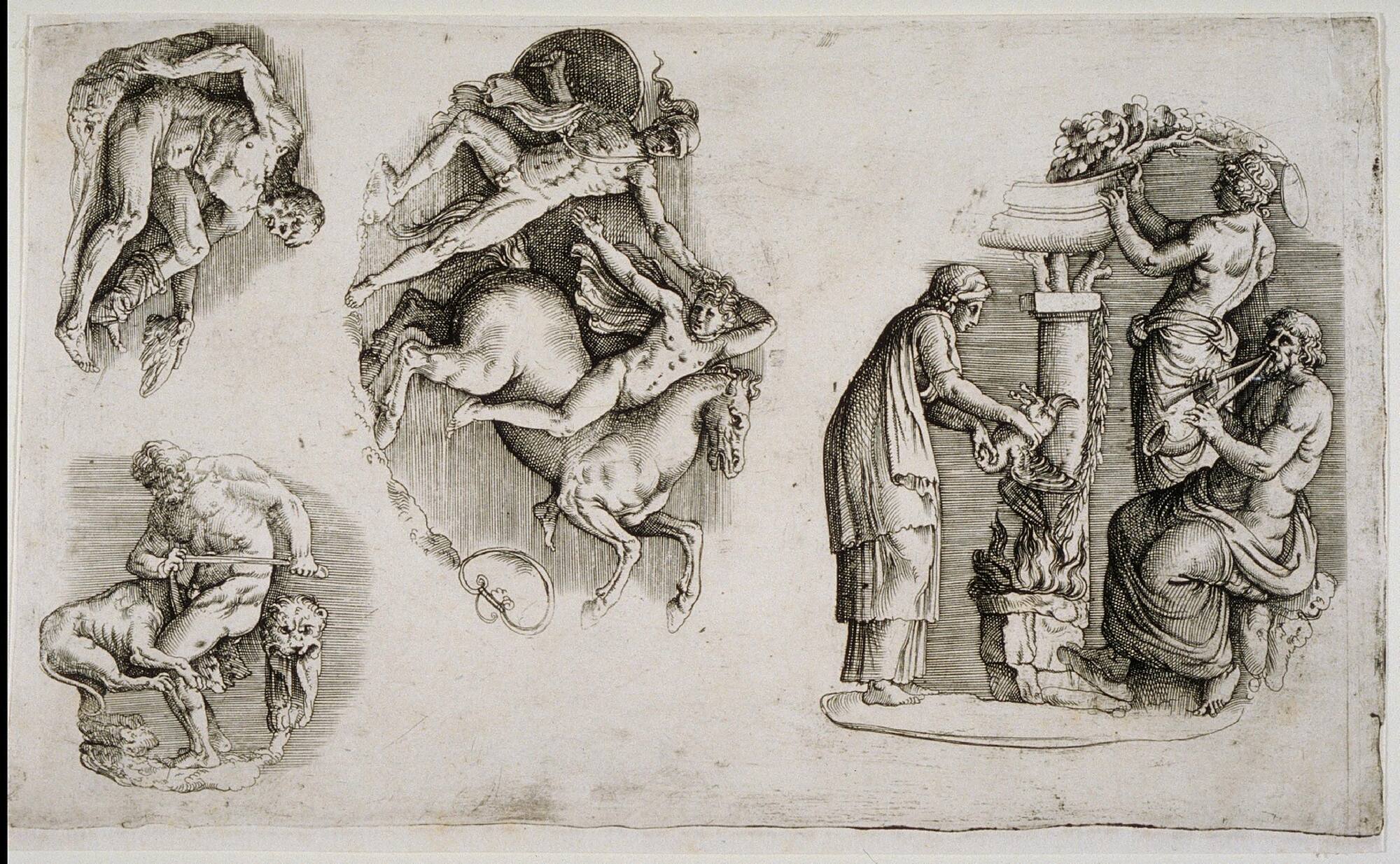
Object Details
Artist
Giovanni Battista Franco
Medium
Etching on laid paper
Dimensions
6 × 9 5/8 inches (15.2 × 24.4 cm)
Credit Line
Acquired through the Museum Membership Fund
Object
Number
62.0410
Pliny the Elder discussed the relevance of carved gems in antiquity throughout his Natural History. (…)
Pliny the Elder discussed the relevance of carved gems in antiquity throughout his Natural History. He notes that the gems can be understood as an experience of the supreme aesthetic from nature and that, to some, it is a crime to engrave them and defile their spontaneous beauty.
The period in which the artist Giovanni Battista Franco lived was a time of renewed enthusiasm for the writings and art of ancient Greece and Rome. As such, ancient carved gemstones and cameos became highly sought after, just as they were in antiquity. In 1551, Franco was commissioned to engrave a series of prints illustrating gems and cameos from the collection of Giovanni Grimani, Bishop and Patriarch of Aquileia. The subjects of the four cameos seen here are more and less identifiable, but Hercules taking the three-headed hound Cerberus can be found at lower left.
These prints would come to be included in the Speculum Romanae Magnificentiae (“The Mirror of Roman Magnificence”), a sixteenth-century publication inspired by the arts of antiquity. The Speculum allowed works of art to transcend the boundaries of their own physicality, becoming a mass-producible commodity that opened the doors of appreciation to a wider audience. Due to the rising popularity of classical sensibilities, Battista democratized the availability of gem engravings through his printmaking.
(Andrew C. Weislogel, “Wonder and Wakefulness: The Nature of Pliny the Elder,” exhibition organized by the Herbert F. Johnson Museum of Art, curated by Andrew C. Weislogel and Verity J. Platt, presented at the Johnson Museum January 21–June 11, 2023)












